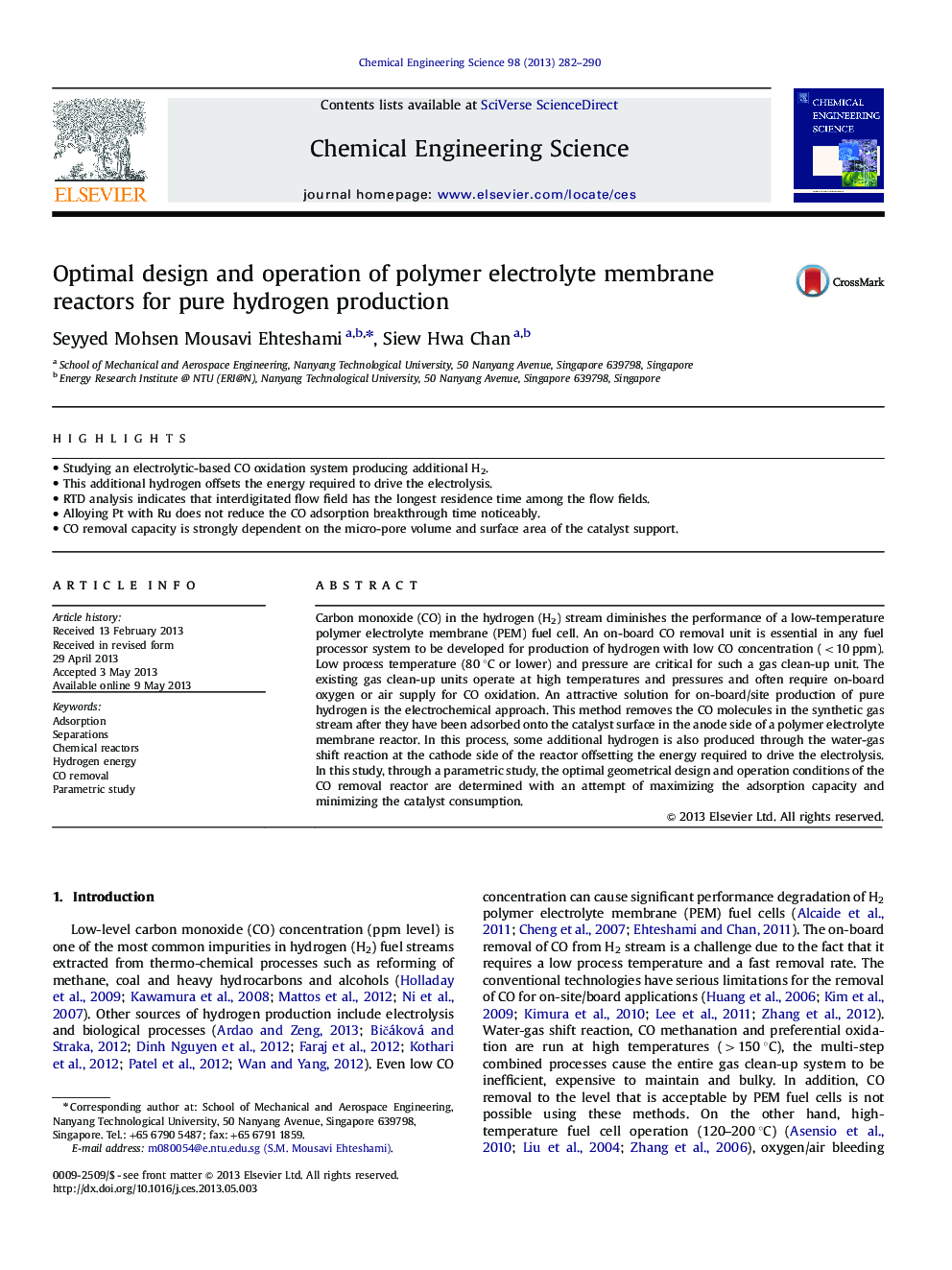| Article ID | Journal | Published Year | Pages | File Type |
|---|---|---|---|---|
| 155127 | Chemical Engineering Science | 2013 | 9 Pages |
•Studying an electrolytic-based CO oxidation system producing additional H2.•This additional hydrogen offsets the energy required to drive the electrolysis.•RTD analysis indicates that interdigitated flow field has the longest residence time among the flow fields.•Alloying Pt with Ru does not reduce the CO adsorption breakthrough time noticeably.•CO removal capacity is strongly dependent on the micro-pore volume and surface area of the catalyst support.
Carbon monoxide (CO) in the hydrogen (H2) stream diminishes the performance of a low-temperature polymer electrolyte membrane (PEM) fuel cell. An on-board CO removal unit is essential in any fuel processor system to be developed for production of hydrogen with low CO concentration (<10 ppm). Low process temperature (80 °C or lower) and pressure are critical for such a gas clean-up unit. The existing gas clean-up units operate at high temperatures and pressures and often require on-board oxygen or air supply for CO oxidation. An attractive solution for on-board/site production of pure hydrogen is the electrochemical approach. This method removes the CO molecules in the synthetic gas stream after they have been adsorbed onto the catalyst surface in the anode side of a polymer electrolyte membrane reactor. In this process, some additional hydrogen is also produced through the water-gas shift reaction at the cathode side of the reactor offsetting the energy required to drive the electrolysis. In this study, through a parametric study, the optimal geometrical design and operation conditions of the CO removal reactor are determined with an attempt of maximizing the adsorption capacity and minimizing the catalyst consumption.
